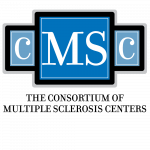Background: MOGAD is an emerging inflammatory demyelination disorder of the central nervous system. AZA is one of the commonly used immunotherapies in MOGAD. Previous observational studies showed mixed results. Herein, we performed a meta-analysis to evaluate the effect of AZA in MOGAD.
Objectives: To estimate the efficacy of azathioprine (AZA) in myelin oligodendrocyte glycoprotein antibody-associated disease (MOGAD)
Methods: A literature search of the databases, including MEDLINE, EMBASE, and Cochrane, was performed from their inception dates to November 2020. We included observational studies that evaluate AZA’s efficacy outcomes, including the change in annualized relapse rate (ARR), ARR during treatment, relapse probability, the difference in expanded disability status scale (EDSS), and the prevalence of freedom from EDSS progression. The studies with less than two patients with MMF and unpublished studies were excluded. Meta-analysis was performed using Comprehensive Meta-analysis Version 3.3 from Biostat, Inc (Eaglewood, NJ). Study results were statistically combined using a random-effect model.
Results: The initial search identified 338 studies. Thirty-two articles underwent full-text review. Nine studies (127 MOGAD patients) were included in the meta-analysis. Overall, the standard mean difference (SMD) of pre- and post-treatment ARR was -0.828 (95%CI -1.198 to -0.459, p<0.001). In pediatric population, SMD was -0.911 (95%CI -1.408 to -0.414, p<0.001). For adults, SMD was -0.669 (95%CI -1.230 to -0.019, p<0.001). The pooled mean (SE) of ARR during MMF therapy was 0.291 (0.134). In pediatric and adult populations, average ARR were 0.208 with SE of 0.266, and 0.513 with SE 0.266, respectively. The overall relapse probability with AZA was 53.1% (95%CI 37.4% to 68.2%). The relapse probability of MOGAD among children with AZA was 48.8% (95%CI 31.4% to 66.4%, I2 <0.001) while it was 50.9% (95%CI 33.8% to 67.8%, I2 3.722) in an adult population. The EDSS change before and after treatment was not statistically significant, with the SMD of -0.807 (95%CI -1.078 to 0.464, p 0.435). Approximately 79.3% (95%CI 49.4% to 91.2%) of patients with MOGAD had no EDSS progression with AZA.
Conclusions: The meta-analysis estimated the pooled efficacy outcome of AZA in MOGAD. Although AZA reduced ARR significantly, more than one-third of patients continued to relapse. Prospective controlled studies are needed to validate these results and investigate safety outcomes.
[learn_press_profile]
